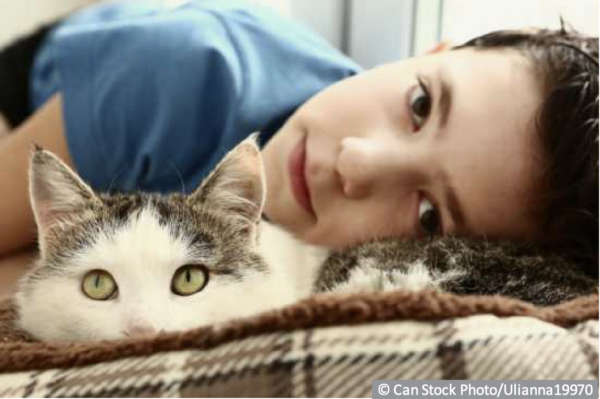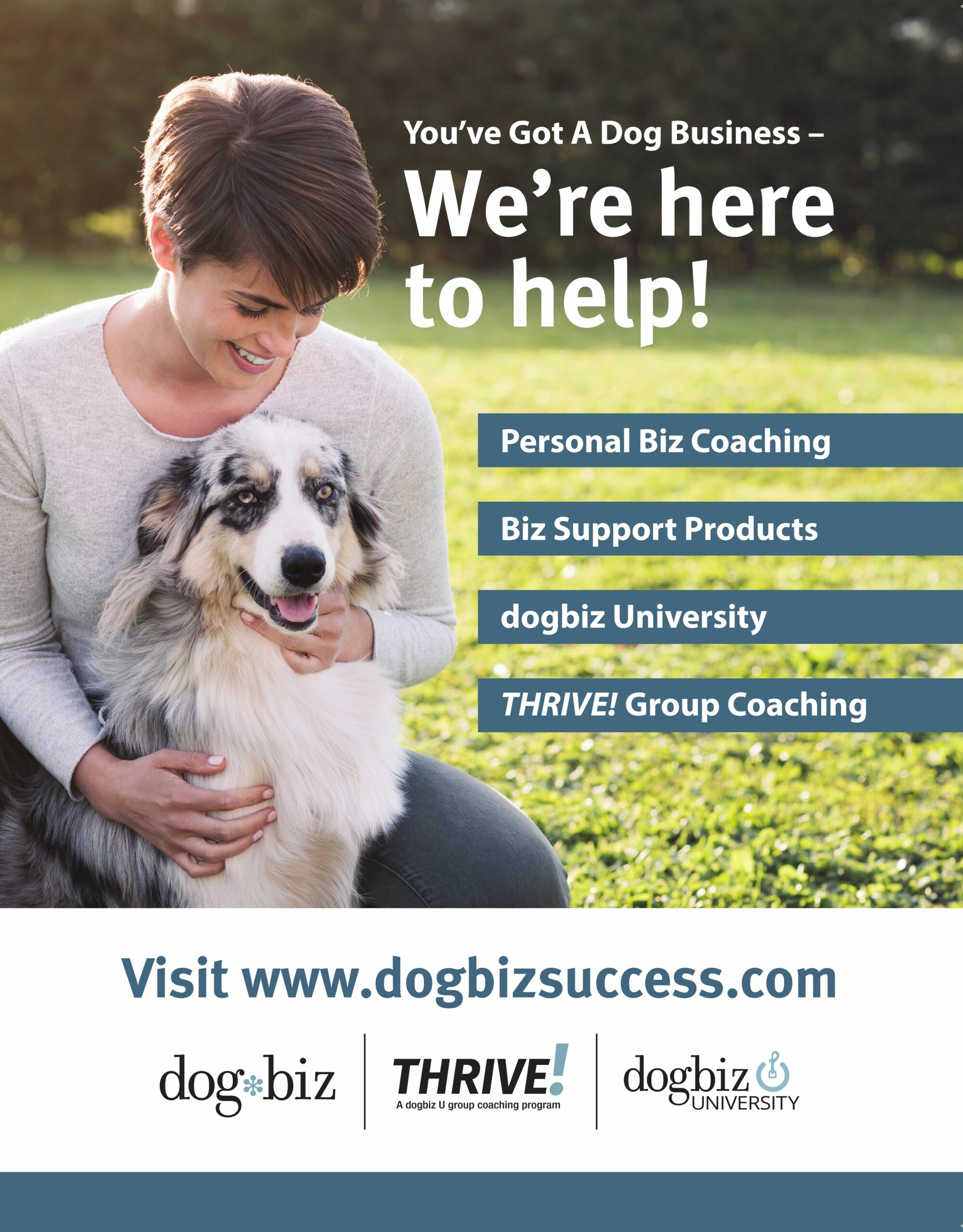Animal Behavior
Eat, PURR, Love
Andrea Carne investigates how feeding regimes can help meet feline behavioral needs, particularly those of indoor cats, while deliberating the findings of a recent study on the same topic. Read the next sentence very carefully (and with a large pinch of salt): Feeding your cat one meal a day might be best. I can almost hear the gasps from cat guardians across the world! “Feed my cat once a day? Are you crazy?” I hear you say. “What do I do when I get the 5 a.m. ‘wake up and… Continued
Working With Undersocialized Kittens and Cats
by the PPG Cat Committee The period between 2 and 7 weeks, often referred to as the sensitive period for socialization, is a crucial time in a kitten’s social development. During these weeks, kittens are particularly open to new experiences, which makes it the ideal time for them to learn about their environment, build trust with humans, and interact positively with other animals. Kittens who experience positive interactions during this period are more likely to adapt well to new situations later in life. Although this early window is an especially… Continued

Cats and Kids
by Andrea Carne “And in breaking news … a child was left scratched and in tears after a play session with his pet cat went horribly wrong …” Ever heard that on the nightly news bulletin? No, of course not. We may hear about dog bites from time to time and much has been written over the years about children and dogs. Indeed, many pages of books, articles and blogs have been dedicated to the topic and some fabulous community education and classroom programs have been developed to educate children—and their… Continued
Pets, Emotions and Anthropomorphism
by Don Hanson Emotions are complicated and messy. So much so that as a youngster watching Star Trek in the 1960s, I was attracted to the Vulcan ethos of suppressing all emotion and replacing it with logic. However, I eventually learned that without emotion, we are devoid of joy, gratitude, serenity, interest, hope, pride, amusement, inspiration, awe and love. But, unfortunately, the price for those positive feelings is negative emotions such as anger, emptiness, frustration, inadequacy, helplessness, fear, guilt, loneliness, depression, feeling overwhelmed, resentment, failure, sadness and jealousy. The fact… Continued
Tips for Ensuring Safe and Happy Holidays for People and Dogs
By Niki Tudge All behaviors that dogs exhibit are designed either to access pleasurable situations and desirable objects or to avoid and escape unpleasant situations and undesirable objects. (Note: This is based on what each individual dog considers to pleasant or unpleasant, not the human, and it is important to be aware that the canine and human opinions may differ in any given situation!) A dog’s communication systems are greatly ritualized, and have evolved specifically to avoid or cut off conflict. This has made dogs, as a species, very successful… Continued
What Is Enrichment for Animals?
by Diane Garrod When the term “enrichment” is verbalized, its meaning is often not clearly understood. When I’ve asked clients, “What enrichment does your dog get?” I’ve gotten answers like ball play or a walk, or a long pause of nothing because the client is not sure what enrichment is or means. This got me thinking about the differing categories of enrichment for animals and led me to dig deeper into the science and definition of enrichment. Is it the same for dogs as it is for horses and… Continued

One for the Birds
by Lara Joseph Aviaries are large outdoor enclosures designed to give birds space to fly, walk, learn and explore in a naturally occurring environment. Providing an aviary in which to train birds is an important form of enrichment for them. Birds, like other animals learn, from their environments. Birds with behavior problems might scream, pluck, or resort to nesting behaviors. Conversely, birds in aviaries have an opportunity to interact with their environments in positive ways and can demonstrate positive behaviors to replace abnormal, repetitive, or undesired behaviors. An aviary improves a… Continued
The Harness Is Coming – Run for the Hills!
I often wonder why some of us expect our dogs to miraculously accept collars, harnesses, leashes, and the like. After all, dogs are not born with these alien contraptions attached to their person! But some of this gear must feel restrictive, worrying, anxiety-provoking, or even potentially painful. Especially without careful prior desensitization. Which Dog Gear and Why? There are many different bits of paraphernalia available out there right now, so think seriously about what you need and why you need it. Most importantly, think how it benefits your… Continued
Dog Speak: The Language of Barking
At a recent public event I attended, the question asked most by companion dog owners was, “How do I get my dog to stop barking?” As professionals, of course, the first thing we want to do is ask more questions. “When does the dog bark?”, “What time of day?”, “What are they barking at?”, “What are they getting out of it?”, “What do you do when they bark?”, “What do you want them to do instead?” and so on. We can all think of people who talk too much yet no… Continued
Socializing Puppies to Other Animals
Dog guardians these days tend to be fairly aware of the crucial importance of socialization. These include the interactions a young puppy will have with people in his/her immediate family, people outside the family, and people of all different ages and appearances, wearing all sorts of strange outfits, carrying various novel objects (such as umbrellas or suitcases) etc. Guardians are often also aware of habituation. This means ensuring that the puppy begins to experience all sorts of adventures in her formative weeks and months that she will encounter in adult… Continued
The Impact of Canine DNA Testing: Mapping the Future
In May 2016, Embark launched its comprehensive pet genetic test in partnership with the Cornell University College of Veterinary Medicine. According to Embark’s website, the test will track “over 200,000 genetic markers, offering ancestry analysis as well as an extensive overview of both genetic disease risk and heritable traits, allowing users to understand their dog’s health, plan for his future and provide the best personalized care possible.” Embark further states that “four out of 10 dogs will suffer from inherited diseases,” and that the test, more than just a breed… Continued
Feline Fastidious Foodies
By Patience Fisher From cat food commercials to cartoons and internet cats, it is something of a running joke that cats are picky eaters. But is this common assumption correct? According to C.A. Tony Buffington, a leading researcher in the field of feline nutrition, the answer is a resounding no. Health and Stress Buffington states that cats are very adaptable; left to their own devices they can and do thrive on a wide range of foods. This is important to their survival, since they are opportunistic eaters. If a cat… Continued
A Better Dog-Human Understanding
By Susan Nilson Marco Adda is a freelance dog behavior consultant, independent researcher, dog-human facilitator (or dog trainer if you prefer), animal advocate, and educator who is passionate about all things canine. He describes himself as a “globetrotter who moves through different continents” but is now considering settling in one place to set up his own canine center offering several programs of education, training, research, animal assisted intervention, and community activities around dogs, humans and other animals. In 2012, Adda initiated preliminary observations of Bali street dogs (BSD). The observations… Continued
The Value of Non-Verbal Communication
By Angelica Steinker Consent testing is an informal experiment which allows a dog to offer consent regarding a specific situation. Via her body language the dog communicates a yes or no response. This information is used to: • Improve the quality of life of the dog. • Improve a training plan. • Make behavior modification more effective. • Generally improve communication. The yes or no is determined by assessing the dog’s body language and observing for distance increasing or distance decreasing behaviors. Distance increasing behaviors are considered a “no” and… Continued
Thunder, Lightning and Barometric Pressure
By Carolyn Kocman Owners and caretakers can almost always recognize phobia related behaviors. Shaking, drooling, panting, restlessness, pacing, clinging to owners and hiding are all fairly overt and recognizable behaviors that can be triggered by such things as loud noises or thunderstorm activity. Immediate Recommendations for Panicking Dogs There are a number of things pet owners can do to comfort an animal that is in the throes of phobia related behavior. What follows is a list of more immediate recommendations. These are not tips on modifying the behavior and should… Continued
Building the ‘Super Learner’
By Kate Mallatratt One of my behavior colleagues posed a very interesting question recently, “If you always set your dog up for success and aim for errorless learning, are you not stunting your dog’s ability for critical thinking, limiting his opportunity to enjoy problem solving and shortening his fuse for frustration?” This excellent question raises several more in my mind: Can learning truly be 100 percent errorless? Does setting up a learning environment for a successful outcome really have a detrimental effect on a dog’s learning ability? Do mistakes actually… Continued
Pups and the Power of Positive Touch
Don’t you just love being able to have that closeness with your dog? The snuggling in, the mutual touch, and just really enjoying each other’s affection? But sadly it’s not always like this. Not all dogs enjoy or are comfortable with our advances or attempts to hug, stroke, pet, or cuddle them. This can be distressing, upsetting and frustrating for both parties, especially as many people love having a dog in their lives so they can benefit from that mutual affection. The Right to Interact? ‘Consent’ is a… Continued
Introducing Cats: Slowly Does It
By Patience Fisher There are many challenges for shelters in finding adoptive homes for cats. As an adoption counselor, I always found it disheartening to have a cat returned to the shelter for not getting along with the resident cats. During the adoption process, the concept of slow introductions was explained, but upon the cat’s return we often found out that the introduction process had been rushed. As a result, I saw a need for a very simple, short, how-to brochure for introducing a new cat to a resident… Continued
Exotic Animals and Shelter Awareness
By Lara Joseph As animal trainers and behavior consultants, our work can appear very appealing to pet owners and those who work with and take care of animals. What we demonstrate in our training is a very important tool we can use to educate the public about how our work is done, its impact on behavior and mental stimulation, and responsibility in animal care. Being an animal trainer and understanding applied behavior analysis, using it, and showing others how to use it is very important to me. My intention… Continued
The Aftermath of “Boot Camp”
By Amanda Ballard [At the time of writing] Kobe is an 18-month-old terrier cross, who is loved madly by his person, Lizzie. My private consultation session with them is the only one in 10 years that has moved me to tears, right there in front of the owner. It absolutely broke my heart to witness a dog displaying visible signs of anxiety, triggered by hearing very basic and commonly used verbal cues. Sadly, it would not be the last time I would witness this. There is no doubt about… Continued
New Bird on the Block
By Vicki Ronchette Over the years I have introduced several parrots into my flock of companion birds. During this time I have found there are some things that should be done early on to help shape the bird into a good companion, while also giving him time and respecting his boundaries. I have talked to a lot of people who were disappointed that their new bird’s behavior changed after a couple of months in their home. Some people call this a “honeymoon period.” I do not use that term… Continued

I Pushed My Friend off the Sofa! Whoops… [How to deal with undesirable guest/animal interactions]
By Ryan Cartlidge I’m not proud of it, but recently I pushed a friend – who was staying at our house – off our sofa! Find out why below (as well as how to avoid doing it yourself) … This happened during the festive season, and if you are like us, you probably have lots of people coming to visit and/or stay at this time. So what do you do if these people (who might be strangers to your animals) come in and engage with your animals in ways… Continued
Compulsive Eating in Dogs
By Maureen Tay Also known as compulsive eating disorder, compulsive eating is a disorder where a dog tends to eat everything – from food items to non-food items. The specific practice of eating non-food, non-nutritive substances, such as wool or paper, is known as pica. Stool eating (coprophagia) can also be categorized under pica. Common among Puppies Puppies are curious animals. They eat just about anything they can find, including things that are inedible. Puppies love to investigate their surroundings. An excellent way to do this is for… Continued
Training a Blind Dog
By Miki Saito Unfortunately, even knowledgeable and experienced trainers sometimes hesitate when it comes to working with a blind dog. It is as if they consider the dog’s blindness an obstacle that cannot be overcome. Since blindness cannot be changed, this mindset can lead trainers to believe that these dogs cannot be trained but this is, of course, untrue. The dog’s blindness does not inhibit training. His emotional state, however, may be preventing him from having a positive learning experience. As explained by Dr. Jesus Rosales-Ruiz at the Clicker… Continued
1 2 3 … 21 Next »

